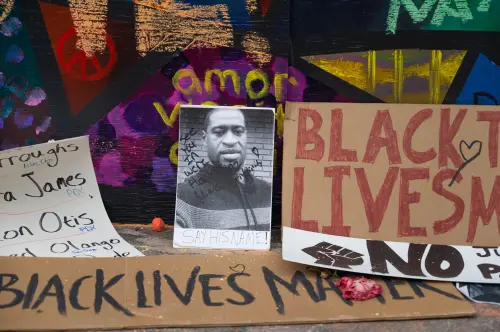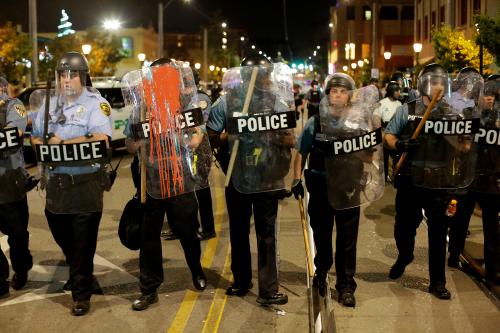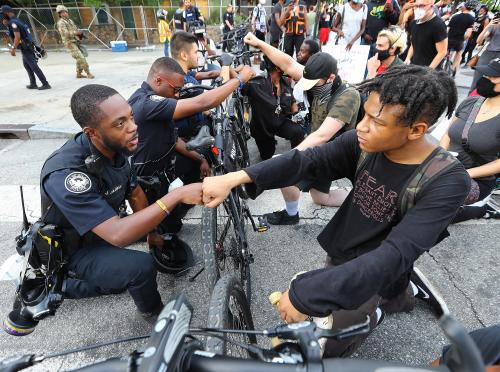Since receiving $100 million plus in funding in 2016, the Movement for Black Lives, a coalition of organizations and groups aimed to set a collective strategic policy agenda to create racial equity for Black people across the United States, has come under increased scrutiny regarding property purchases and potential financial mismanagement within the Black Lives Matter Global Network Foundation. While these incidents should be investigated and any impropriety addressed legally, financially, and organizationally, some people are using these incidents to question their own commitment to the Black Lives Matter movement. Rapper Kanye West and conservative influencer Candace Owens taking a picture in sweatshirts with “White Lives Matter” written on the back during Paris Fashion Week is one such example of people using alleged impropriety of individuals to justify vilifying an entire movement focused on racial equity.
If the behavior of some organizational administrators leads individuals to question whether to support the notion that Black Lives Matter, then they were most likely waiting to leave the pursuit of racial equity at the first sign of trouble. It is a fact that many organizations and companies encounter administrative and financial issues during periods of expansion and downsizing. There were allegations of money fraud by Bed, Bath, and Beyond leadership, yet people didn’t start returning blenders, cutting boards, and espresso machines.
So, why do we seem to critique Black organizations more harshly? Our collective appetite to justify criticizing Black organizations speaks to how deeply embedded anti-Blackness is within the cultural pallet of the United States. In the case of West and Owens and those who think like them, there are a series of misses that need to be addressed. While unsolicited martyrs have become symbols of the Black Lives Matter movement, one key statistic drives it—Black people are 3.5 times more likely than white people to be killed by police when they are unarmed and not attacking, and as in the case of Trayvon Martin, more likely to be profiled because of race.
On February 26, 2012, George Zimmerman killed Martin. The killing (ruled as self-defense) and the trial galvanized the country and sparked protests and conversations about racism, profiling, and court rulings. In response to the Zimmerman verdict, a Facebook conversation by Patrisse Cullors, Alicia Garza, and Opal Tometi sparked the slogan—#BlackLivesMatter. In 2013, Cullors, Garza, and Tometi created the Black Lives Matter Network. The organizational entities were intended to be decentralized, independent, and grassroots-led while sharing information and resources. Following the 2014 killing of Michael Brown by former police officer Darren Wilson in Ferguson, Missouri, a city right outside of St. Louis, Black Lives Matter expanded to the Black Lives Matter Global Network Foundation, Inc. and broadened to the Movement for Black Lives.
The Black Lives Matter movement has been highly effective over the past decade. Black Lives Matter aimed to shed light on police brutality, which it has done. Below is a list of some of the notable impacts of the movement.
- Black Lives Matter normalized the filming of Black pain at the hands of individuals sworn to treat everyone equally. Without personal video, we may not collectively know about George Floyd, Freddie Gray, Eric Garner, Sandra Bland, or Korryn Gaines.
- Black Lives Matter shifted public opinion. For example, a 2017 Pew study found that 54% of white people viewed officer-involved shootings involving Black people to be signs of a broader problem. The fact that over 50% of white people think that policing has racial issues is a huge achievement. This attitudinal shift created a policy window for local, state, and federal changes to policing and the criminal justice system.
- Black Lives Matter helped usher in a series of policy and organizational changes to policing that include implicit bias trainings, body-worn cameras, and bans on no-knock warrants.
- Black Lives Matter helped illuminate the inordinate amount of money spent on policing and civilian payouts for police brutality that come out of taxpayer pockets.
- Black Lives Matter helped stimulate federal oversight for problematic cities such as Ferguson, Louisville, Baltimore, and Minneapolis.
- Black Lives Matter altered data collection efforts in the academy, police departments, and the federal government to better assess what law enforcement policies do and do not work to reduce racial disparities.
- Black Lives Matter galvanized a new crop of elected officials and political actors.
- Black Lives Matter is etched in yellow paint on the street outside of the White House.
Accordingly, it is important to disaggregate the movement from the organization. We also should be mindful of anti-Black infiltration into Black organizations to disrupt and invalidate them. Appropriately, we need to question the mysterious deaths of St. Louis activists. From a historical perspective, COINTELPRO comes to mind as well as the many assassinations of Civil Rights activists.
When it comes to addressing racism, some people tend to quickly forget what the Black Lives Matter movement is about. Black Lives Matter is a slogan because Black lives matter less, not just in police encounters but in health care settings, schools, and even in property values of Black communities.
I reflect on the “Mothers of the Movement” and the heavy burden these women carry. Let’s be sure we keep the narrative centered correctly—preventing more mothers from becoming members of a club no one wants to join. Black Lives Matter is a direct affront to racism and hate in America and beyond. To be against what Black Lives Matter stands for is to passively accept the racism that has divided us since the founding of this nation.






Commentary
Black Lives Matter at 10 years: 8 ways the movement has been highly effective
October 12, 2022